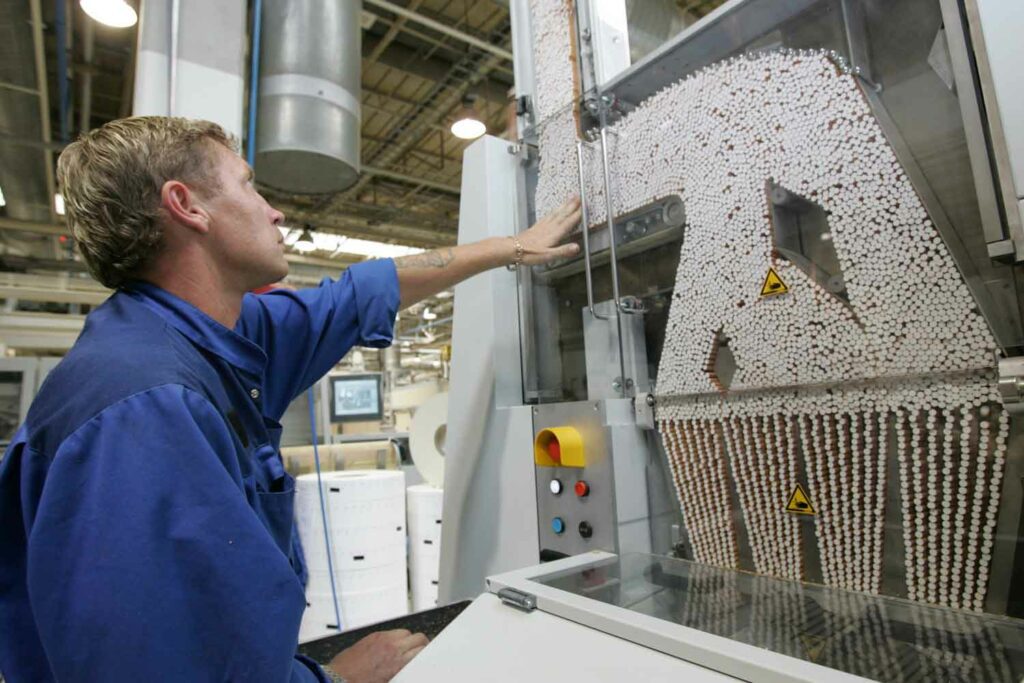
Cuba’s cigar industry is on the road to recovery after several challenging years.
By Timothy S. Donahue
The Cuban cigar industry made huge profits last year, but it wasn’t because it produced more cigars. While the impacts of the pandemic, the weather and the scarcity of almost everything are overwhelming, the Cuban people and its tobacco industry are finding ways to endure. The cigar industry mirrors the country as a story of overcoming adversity and sowing the seeds of a hopeful new beginning.
When Hurricane Ian’s winds began to howl in September 2022, they caused significant damage in the Pinar del Rio region, Cuba’s most prominent tobacco-producing province. The storm eviscerated crops and flattened 90 percent of the tobacco curing barns and other farming infrastructure needed to grow tobacco. The destruction came on the heels of the Covid-19 pandemic, which had already brought the worst economic suffering Cuba had seen in decades.
Recovery has been slow, but Cuba has endured. While this year’s tobacco crop is the worst in the written history of the island’s tobacco crops, Cuba’s newspaper, Granma, reported earlier this year that 4,776 barns have been rebuilt, and another 620 are being completed. Luis Sanchez-Harguindey, co-president of Habanos, the state-run global distributor of Cuban cigars, said during a press conference at the 24th annual Festival del Habano that Cuban growers had also focused resources on their most efficient, volume-producing farms.
“This growth factor has also been due to the enhancement of all the supply chains and the great effort done by Tabacuba, the producers, the tobacco growers, who, after the pandemic and the hurricane, have been increasing production,” he said. “We have a better group of products [we now can produce]. And these products that we offer, of course, do not satisfy the demand for the products yet.” He explained that the combination of increased demand and lower supply has been one reason for this year’s record growth.
As the 2023–2024 growing season closed, a representative of Grupo Empresarial Tabacuba—the state-run company charged with managing the production of Cuban tobacco and cigars—told Tobacco Reporter that only two-thirds of the pre-hurricane tobacco hectarage was used for tobacco cultivation this season. Tabacuba said it reduced its targeted goals for the 2023–2024 harvest from the planned 12,905 hectares to 10,200; however, the amount of land used to grow tobacco is expected to return to pre-hurricane levels for the 2024–2025 season.
“Today, we have a great [percentage] of this infrastructure operating at 100 percent. This has been possible because we quickly had all the necessary resources to build a workforce, a specialized labor force that can rebuild everything that had been destroyed,” Sanchez-Harguindey said. “There are still some minimally damaged areas. It is mainly issues related to construction [acquiring supplies]. Tabacuba has a policy to concentrate production with tobacco growers that traditionally produce higher yields and better quality. This has been possible during the year 2023. The impact, the result of all this work, is unprecedented growth in revenues over 2022.”

Getting a Boost
Sanchez-Harguindey said that while the farms produced less tobacco in 2023, Habanos achieved a major increase in the value of its cigars due to a new pricing structure and successful promotions of exclusive brands such as Trinidad and Cohiba. “We’ve been able to compensate for that reduction in volume with value,” he said.
Habanos earned revenues of $721 million in 2023, up 31 percent compared to the previous year. Last year, the company generated $545 million in revenue, nearly 2 percent more than in 2021. “This is a year of records,” Sanchez-Harguindey said at the Festival del Habano, which took place Feb. 26—March 1.
The company’s products are available on five continents. During 2023, the markets that contributed most to Habanos’ sales volume were Spain, France, China, Germany and Switzerland. Habanos is owned 50 percent by the Cuban government and 50 percent by a consortium of Asian investors under the umbrella of companies called Allied Cigar Group, which is rumored to be majority-owned by HuaBoa, a major Chinese tobacco flavoring company. By region, Europe remains the leading market for Habanos, accounting for 56 percent of total sales value, followed by Asia (21 percent), the Americas (13 percent) and Africa and the Middle East (10 percent).
In 2023, the company launched 31 new products, including Cohiba Siglo de Oro, Cohiba Ideales, Romeo y Julieta Cupidos, Hoyo de Monterrey: Monterrey No. 4, and Bolivar New Gold Medal. With its 27 marcas and a presence in more than 130 countries, Jose Maria Lopez Inchaurbe, vice president of development for Habanos, credited the company’s success to “excellence, tradition and innovation.” A more obvious answer for the revenue jump is the boost in Cuban cigar prices globally. Habanos, said Lopez Inchaurbe, has transformed the Cuban cigar into a luxurious, high-end smoke in global markets, especially in China.
During the media portion of the festival, several reporters asked for clarification of Habanos’ revenues. Andrea Rodriguez, from the Associated Press, questioned how revenues went from 2 percent in 2022 to 30 percent this year. Lopez Inchaurbe said that there are different reasons to justify the growth. He said, “It’s a reality that after the pandemic, both the luxury market and the consumption of premium goods around the world have been increasing considerably,” and that demand has been global.
Lopez Inchaurbe said that the company also positioned its “super-premium” segment (Cohiba and Trinidad) more prominently and promoted the brands heavily in markets where luxury cigars are in greater demand. There has also been an increase in limited-edition cigar releases. “In the year 2023, we have launched 32 new products, nine of them in the premium standard category, which is the permanent portfolio of Havana, and 22 of them are in the concept of specialties,” he explained.
In 2022, Habanos announced a new “global pricing standard,” which massively increased the prices of Cuban cigars worldwide. The company has already announced at least two additional price increases for 2024. The price increases have significantly impacted the costs of Cuban cigars. Five years ago, the Cohiba Siglo IV, the flagship of the Cohiba brand, cost less than $60 a stick. Today, the cigar costs nearly $400 a stick in most markets. However, not all markets are treated equally.
Store shelves in Cuba were not heavily stocked during Tobacco Reporter’s visit. Finding large-ring-gauge cigars or anything with a Cohiba or Trinidad label was also difficult. Many local cigar shops in Havana said that they had not received shipments in more than a year, and some La Casa del Habanos (LCDH) locations said that it had been at least nine months since they had a cigar delivery. For the festival, however, every shop seemed to have received shipments of varying vitolas and marcas. Many shops had the new Romeo y Julieta Cupidos, 20 for $1,600, and boxes of the new Cohiba Siglo de Oro, priced at $4,500 for 18 sticks ($250 each).
An interesting, unusual occurrence was the introduction of a new POS system for payments during the festival. This system now allows Americans to purchase Cuban cigars (for consumption while on the island) with their U.S.-based credit cards, which has long been impossible. However, it is unclear whether this is a coincidence or if it was a permanent addition to the Cuban payment system. Tobacco Reporter was told that the new payment system is currently being used in only two of the LCDH stores in Cuba; however, it is expected to expand to all LCDH locations.

The Featured Event
 In the past, registration for the Habanos Festival opened months before the event. However, last year, registration opened a mere 40 days before the event, and this year, Habanos gave attendees only 27 days to register. Overall, this year’s festival was better than most. The entertainment was spectacular, and the cigars were the best in the world.
In the past, registration for the Habanos Festival opened months before the event. However, last year, registration opened a mere 40 days before the event, and this year, Habanos gave attendees only 27 days to register. Overall, this year’s festival was better than most. The entertainment was spectacular, and the cigars were the best in the world.
Habanos celebrated several milestones this year, including the company’s 30th anniversary, the 50th anniversary of the Quai d’Orsay brand and the 55th anniversary of the Trinidad brand. Featuring an estimated 2,200 attendees and more than 200 journalists, the festival is where Habanos showcases its assets and previews a number of its major releases every year. The festival features multiple seminars, epic dinner events centered on various brands, and a trade show with over 200 exhibitors.
Traditionally, Tuesdays are reserved for trips to Pinar del Rio, Cuba’s legendary tobacco-growing region. While many media attendees visited the famed Vegas Robaina farm, Tobacco Reporter visited a smaller farm in San Juan y Martinez, often called the “Mecca of tobacco.” The fields looked exceptionally healthy, with broad, green leaves. The curing barns had been freshly painted, and the workers seemed vibrant and plentiful. The barns were in the process of being filled.
This year, attendees were also allowed to roll a cigar alongside professional rollers at one of five factories. It marked the first time the festival hosted its master rolling class in the same buildings where Habanos cigars are produced. Daymi Difurniao Rodriguez, communications and marketing specialist for Habanos, said that the venue change was to allow more attendees to learn firsthand about the “Totally by Hand” production process of a Habano.
“I wanted the press to make their own Habano so they could understand the details and intricacies involved in creating the Habanos, the world’s finest cigars,” said Difurniao Rodriguez.
The torcedor (cigar roller) who taught the El Laguito class was quality specialist Ana Isel Mederos Cano. She is also a nominee for the Habano Woman of the Year award in the production category for the festival. She has been at El Laguito for 25 years, 11 of them as a roller and the past 14 in her current position. “I love that I have been given this opportunity to teach the art of cigar rolling to the representatives of media from around the world,” she said.
Visitors had the opportunity to visit the La Corona, Partagas, H. Upmann and Carlos Balino factories. El Laguito was for media only. La Corona has about 750 employees, 300 of whom are dedicated rollers. The rollers produce brands such as Hoyo de Monterrey, Montecristo, Cuaba, Diplomaticos and San Cristobal de la Habana.
The H. Upmann factory produces H. Upmann, Montecristo, and Romeo y Julieta and several sizes of Cohiba. Partagas is one of Havana’s iconic factories, and Carlos Balino is the former El Rey del Mundo factory. The legendary El Laguito is home to Habanos’ premier marcas, Cohiba and Trinidad.
As in previous years, the Gala Dinner takes place during the final night of the Habanos Festival. It includes the presentation of the prestigious Habanos Awards and the auction of several elaborate humidors. The proceeds from the auction are donated to the Cuban Public Healthcare System.
This year’s auction included seven humidors, one for each of the company’s six global brands: Cohiba, H. Upmann, Hoyo de Monterrey, Montecristo, Partagas and Romeo y Julieta. Additionally, one humidor was dedicated to the 55th anniversary of the Trinidad brand. Eight lots were sold for a combined €17.8 million ($19.3 million), setting a record for the auction.
The headliner for the festival’s gala dinner was none other than the Village People. As the crowd swayed to hits such as “YMCA” and “Macho Man,” the challenges of growing and selling cigars, and surviving in the country, could be forgotten for a while.







































